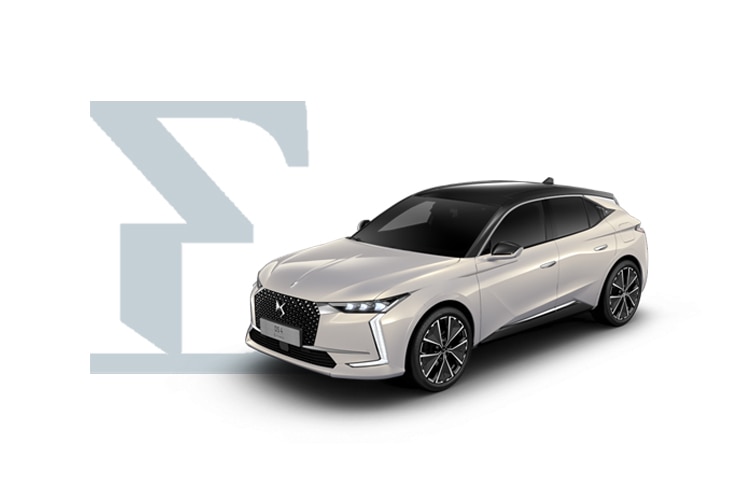
ECO-PERFORMANCE TECHNOLOGIES
DS AUTOMOBILES RESEARCH & INNOVATION
TECHNOLOGIE E-TENSE
Electrification according to DS Automobiles

Technology inspired by Formula E
DISCOVER OUR E-TENSE RANGE
OUR PURETECH PETROL ENGINES
More compact, lighter, more powerful
Our engineers managed to achieve a significant reduction in fuel consumption by reducing the size and weight of our engines and integrating innovative low-friction materials.

Cleaner
By reducing the size and weight of our engines, and integrating innovative low-friction materials, our engineers have managed to achieve a significant reduction in fuel consumption and thus, CO₂ emissions per vehicle.
OUR BLUEHDI DIESEL ENGINES
The alliance of efficiency & driving pleasure
Our 4-cylinder BlueHDi diesel engines are available in two different power ratings: 130 hp and 180 hp.

Latest generation depollution system
The WLTP
Des consommations plus réalistes
The WLTP (Worldwide Harmonised Light vehicles Test Procedure) is the vehicle approval protocol within the European Union that specifies a new test cycle and procedure for measuring fuel consumption, CO2 and regulated pollutant emissions from light-duty vehicles Light-duty vehicles = passenger and light-duty commercial vehicles < = 3.5 tonnes under standardized (laboratory) conditions.
The WLTP protocol replaces the previous approval procedure (NEDC) which came into force in 1992. Since September 2017, all new models marketed for the first time are WLTP approved. Since September 2018, all vehicles sold must be WLTP approved. This new laboratory test protocol will be complemented by the real-world pollutant emission measurement: Real Driving Emission (RDE).
The new WLTP protocol will allow consumers to have a more accurate view of their vehicle’s fuel consumption and CO2 emissions.


Thanks to judicious technological choices deployed in anticipation of the regulations (SCR in diesel and GPF in gasoline), our vehicles are already WLTP approved (compulsory for all private vehicles from September 2018) which comes closer to the real use of clients.
The customer is at the heart of our concerns. This is why we have always supported the implementation of procedures representative of customer usage and why we strive to stay ahead of new protocols to stay at the technological forefront.
As proof of our transparency, we have published on our site the consumption of our models since 2016 and their NOx emissions since March 2018 in real conditions of use, according to a protocol developed with NGOs (T&E and FNE) and certified by a third party organization. independent (Bureau Veritas).
Amendments to standardized test procedures
- Emissions measurement to consider adjustments on individual vehicles
- Lengthening the distance travelled during cycles
- Tests carried out at higher speeds
- More nervous and realistic driving behaviour
- Lengthening the duration of cycles
The new WLTP procedure aims to ensure a better representativeness of the actual conditions of use of vehicles and their current technologies during approval. It defines stricter test conditions and a more dynamic driving profile than the previous NEDC cycle developed in the 1990s. Its construction was based on actual taxi data while the NEDC was based on theoretical driving profiles.
WLTP also produces more precise values because it takes into account the specifications of each vehicle including all of its optional equipment whose influence on fuel consumption and CO2 emissions can be noticeable. WLTP values are, in some cases, higher than NEDC values for the same car. This does not mean that the fuel consumption performance is degraded, it is simply a new measure based on a more rigorous, longer benchmark, thus better reflecting the current uses of vehicles.
| NEDC | WLTP | |
|---|---|---|
| test cycle |
Cycle de test unique
|
Cycle dynamique plus représentatif des conditions de conduite réelle |
| Cycle time | 20 minutes | 30 minutes |
| Distance du cycle | 11 kilomètres | 23,25 kilomètres |
| Phases de conduite | 2 phases, 66% de conduite urbaine et 34% de conduite rurale | 4 phases plus dynamiques, 52 % de conduite urbaine et 48 % de conduite rurale |
|
Vitesse moyenne
|
34 km/h | 46,5 km/h |
|
Vitesse maximum
|
120 km/h | 131 km/h |
| Influence des options individuelles | Le NEDC ne tient pas compte de l’impact sur les émissions de CO2 et sur la performance énergétique | Les caractéristiques additionnelles (pouvant varier selon les modèles) sont prises en compte |
| Changements de vitesse | Changements de vitesse fixes | Points de passage calculés pour chaque véhicule |
| Températures de test |
Mesures réalisées entre 20 et 30 °C
|
Essais réalisés à 23 °C, CO2 corrigé à 14 °C |
EMISSIONS IN REAL DRIVING SITUATIONS
Real Driving Emissions - RDE
From September 2018, in addition to the WLTP approval protocol, all manufacturers will have to measure the emissions of their real-driving vehicle (RDE) of all vehicles sold within the EU, and in Switzerland, Turkey, Norway, Liechtenstein, Israel and Ireland.
In these RDE tests, emissions of pollutants such as nitrogen oxides (NOx) and fine particulate matter are measured on open roads for more realistic information.










